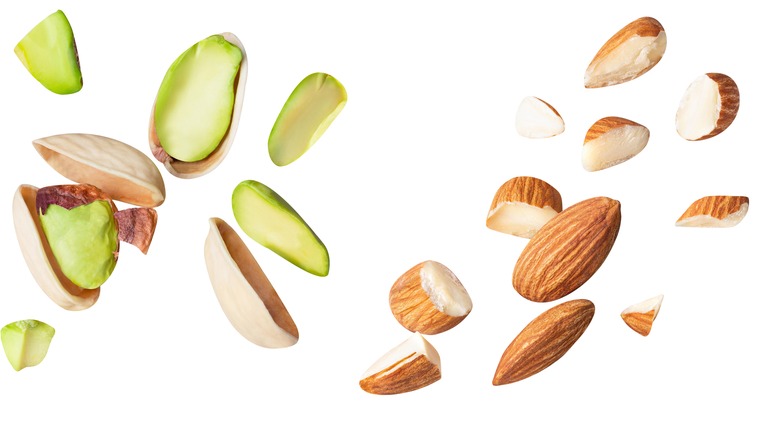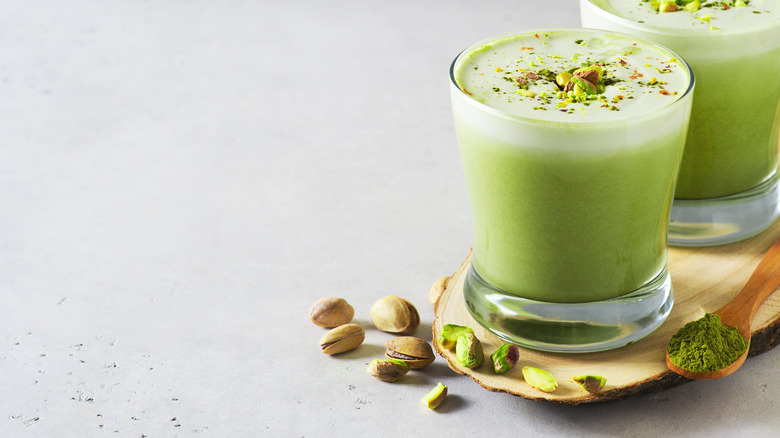Is Pistachio Milk More Sustainable Than Almond Milk?
Lattes have been around since the 17th century when Europeans first started mixing coffee with steamed milk (via Achilles Coffee Roasters). Lattes took America by storm by the 1980s, when Seattle baristas started latte art trends, and then not long after alternative milk lattes emerged onto the scene. First up, vegan soy milk lattes appeared in California and then became mainstream by 2002, as reported by the Los Angeles Times. Fast forward twenty-some years, and the alternative milk industry has reached 3.1 billion in sales worldwide, with almond and oat milk being the most popular (per Dairy Foods).
For non-dairy milk drinkers, there are many plant milk alternatives, but while these dairy swaps don't involve animal products or cruelty, there is a downside to nut milks. Almond milk, for example, has a higher carbon footprint than cow's milk, according to 8 Billion Trees. Luckily, there is a new nut milk alternative that's more sustainable than almond milk.
Enter pistachio milk
According to one report from Well + Good, it takes less water to grow pistachios than it does to grow almonds, which makes pistachio milk better for the environment. Taché, a recently launched pistachio milk brand, was founded by Roxana Saidi, who grew up snacking on the distinctively green nut and wanted to turn her favorite snack into a delicious milk drink (per One Green Planet).
Overall, most of the reviews of pistachio milk are overwhelmingly positive: The Beet claims that it's the best non-dairy creamer on the market, has fiber and protein, and also doesn't contain any added vegetable or canola oils, as some oat milks do. Pistachio milk also takes half the water it does to make almond milk. Another reason to love Taché pistachio milk is that just by drinking the nutty milk, you can help support the education and empowerment of young girls since a portion of their proceeds is donated to The Lower Eastside Girls Club of New York City. Cheers to that.

